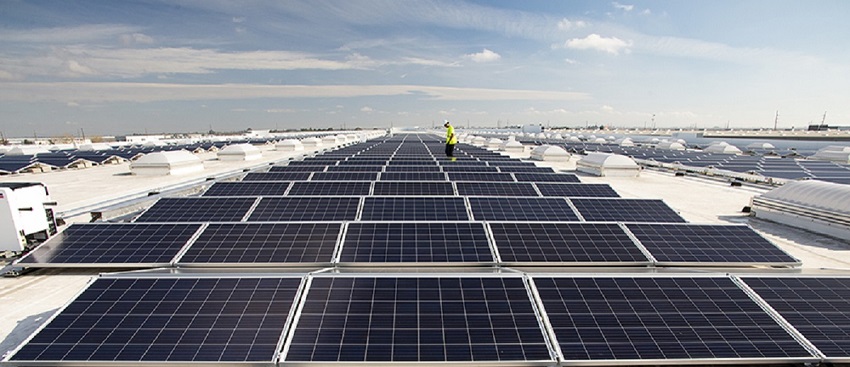Top Guidelines Of Solar Panels Pennsylvania
Top Guidelines Of Solar Panels Pennsylvania
Blog Article
Solar Installers Near Me: Our Firm Specializes In The Installation And Management Of Photovoltaic Energy Systems
History and Development of Solar Panel Business
The inception of photovoltaic panel business can be traced back to the 1800s when Alexandre Edmond Becquerel discovered the photovoltaic impact. Would he have thought of how his discovery would revolutionize the way we harness energy?
Early Starts

In 1954, Bell Labs developed the first useful photovoltaic cell. This marked a substantial milestone in the history of solar energy. They were at first utilized to power space satellites, but who knew this was simply the beginning?
Development and Development
- In the 1970s, an energy crisis caused increased interest in renewable energy sources, including solar power.
- By the 1990s, improvements in technology and increasing environmental awareness led to the development of photovoltaic panel business internationally.
A New Period
As we entered the 21st read more century, the solar market saw a rapid growth. The need for tidy and renewable resource produced a new age in the solar panel industry.
Remarkable Realities
- The world's first solar energy station was built in 1982 in Hisperia, California.
- By 2019, solar energy had become the world's fastest-growing source of power.
The journey of solar panel companies has been amazing, hasn't it? The future holds immense capacity, with continuous improvements leading the way for a sustainable future. Can we envision a world powered totally by solar energy?
Progressing
Today, photovoltaic panel business continue to innovate, pursuing more efficient and economical options. The development of solar power has actually come a long way, and yet, the journey has actually just begun.
The Core of Photovoltaic Panel Production
Ever wonder what goes into producing those shiny, sun-loving photovoltaic panels? The procedure is as outstanding as completion product (Affordable Solar Panels PA). High-purity silicon, the main active ingredient in photovoltaic panels, goes through different improvements to guarantee its efficiency and resilience
From Sand to Silicon
Crystalline silicon, the backbone of a lot of photovoltaic panels, originates from simple sand. It's a fascinating journey, isn't it? The sand goes through a high-temperature response with carbon to form silicon. This isn't just any silicon. The silicon utilized in photovoltaic panels is "solar-grade," with a purity of 99.9999%. It's this purity that makes it possible for the panels to efficiently transform sunshine into power.
Ingot Development
As soon as the silicon is pure enough, it's time to form ingots. Image a large, round block of strong silicon. How is this attained? Through a procedure called Czochralski process, where the silicon is melted and after that slowly recrystallized. It's a slow dance of science, leading to a strong product that is nearly as pure as the raw silicon itself.
Slicing into Wafers
The ingots are then sliced into wafer-thin pieces, like slicing a loaf of bread. Each slice is a prospective solar cell, waiting to harness the power of the sun. Did you understand that the silicon wafers are just about 200 micrometers thick? That's about half the density of a human hair! The process requires precision and perseverance, but the result is a set of wafers prepared to be developed into solar batteries.
Creating Solar Cells
With the wafer ready, it's time for the magic to happen. The silicon wafer is 'doped' with other aspects like phosphorous and boron to create an internal electric field. It's this field that enables the conversion of sunshine into electricity. Complex, isn't it?
Assembly and Quality Control
Solar battery are like puzzle pieces that come together to form a solar panel. The cells are soldered together in a grid-like pattern, then covered with a protective layer of glass. The final action includes rigorous quality control checks. After all, it's necessary that every photovoltaic panel carries out at its peak, would not you concur?
Insider Idea
Always keep in mind that even the most optimally manufactured solar panel can lose efficiency due to dirt and debris accumulation. Regular cleansing can significantly improve your panels' efficiency.
Comprehending the Environmental Impact of Solar Panel Companies
Ever contemplated the ecological footprint of a solar panel company? Green technology, such as solar, has transformed our energy landscape, however what about the behind-the-scenes impact?
The Manufacturing Process: A Double-Edged Sword
The production process for solar panels demands a significant quantity of energy. This procedure, understood as 'em bodied energy', can be deemed a kind of 'energy debt'. It's a little like obtaining today's sunlight to power tomorrow's energy requirements. However fret not, the energy repayment time is often much shorter than you 'd think!
- The energy payback period for photovoltaic panels is normally 1-4 years.
- After this duration, the energy produced is essentially carbon-free.

Life After Decommission
And what happens when a solar panel reaches completion of its life-span? Can it simply be tossed into the trash? No, that wouldn't be really green, now, would it?
A practical solution is recycling. While photovoltaic panel recycling is still in its infancy, it holds a world of capacity. Recycling not just keeps products out of garbage dumps however also decreases the requirement for new basic materials.
Responsible Sourcing: More Than A Buzzword
Where does the silicon originated from, you ask? The market's demand for silicon and unusual minerals can lead to destructive mining practices. Responsible sourcing is therefore crucial to lower harmful ecological effects.
Minimized Carbon Emissions: The Bigger Image
Let's not forget the larger image: solar power considerably lowers carbon emissions. Once installed, photovoltaic panels generate clean, renewable resource, balancing out their initial production footprint.
Simply put, the environmental effect of solar panel companies is an intricate problem. With responsible practices, the pledge of a cleaner, greener future is well within our grasp.
Financial Performance and Market Share of Photovoltaic Panel Business
Ever wondered why some solar panel companies - Residential Solar Panels PA beat others in the market? What sets them apart? The essential lies in their monetary efficiency and market share
Financial Efficiency: A Critical Indicator
Financial efficiency plays a critical function in the success of any company. For solar panel business, it's no various. Strong monetary performance enables these business to buy innovative technology, research study, and development, thus creating premium, effective solar panels.
How do they accomplish this? With a focus on expense efficiency and strategic financial investments. Business that handle to lower production costs without jeopardizing on quality tend to fare much better in the market.
Market Share: A Measure of Success
Market share, on the other hand, is a direct reflection of a company's appeal among consumers. A high market share suggests more homeowners are choosing their solar panels over rivals.
So, what's the secret recipe for acquiring a bigger market share? It comes down to client complete satisfaction and brand track record. Business that focus on consumer needs and keep a positive brand image are more most likely to capture a bigger share of the marketplace.
- Client Complete satisfaction: Solar panel business that deliver dependable products and extraordinary client service tend to have higher client complete satisfaction rates.
- Brand Reputation: A strong brand name reputation is built in time through constant shipment of quality product or services.
Financial Efficiency and Market Share: The Cooperative Relationship
Surprisingly, the relationship between monetary efficiency and market share is not one-sided. They feed off each other. A strong financial efficiency can increase a company's market share, while a high market share can improve financial efficiency.
As a solar panel company, balancing these two aspects is essential for long-lasting success. A company that disregards either of them might discover it challenging to preserve its position in the competitive solar industry.
The Takeaway
What does all this mean for you? Whether you're a homeowner looking to install photovoltaic panels or an investor eyeing the solar industry, understanding the monetary performance and market share of photovoltaic panel business is essential. They are essential indicators of a business's health and capacity for future development.
Report this page